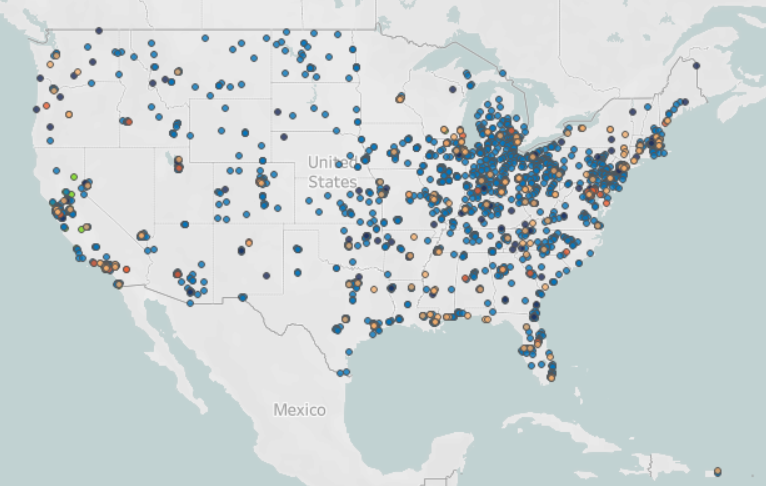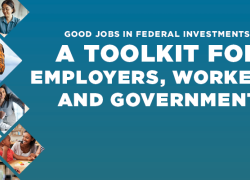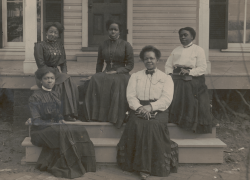
Today under the leadership and vision of Acting Secretary of Labor Julie Su, we are excited to announce the launch of the Department of Labor’s High Road to the Middle Class map.
High road training programs that implement demand-driven workforce strategies advancing job quality, equity and worker voice are a proven successful model for workforce development. Through partnerships with both employers and labor, these programs deliver worker-centered and industry-driven training that is connected to employer needs and regional labor market demands for a skilled workforce. These programs partner with employers and worker representatives to develop equitable pathways for workers to family-sustaining careers in good jobs — including good union jobs. They can also be extremely effective at attracting job seekers in a highly competitive labor market and tapping into underserved communities where workers are unemployed, underemployed or overrepresented in low-wage industries because they often include partnerships with local organizations rooted in these communities and provide pathways to quality jobs in in-demand occupations.
The Department of Labor has identified over 2,465 high road training programs that are currently operating across every state and territory in the country. Specifically, programs included on this map meet the following criteria:
- They provide training in an occupational skill or industry relevant to the workforce needs of Investing in America projects (that is, projects funded by the Bipartisan Infrastructure Law, the CHIPS and Science Act, and the Inflation Reduction Act).
- They use one or more of the following evidence-backed training models: Registered Apprenticeship, pre-apprenticeship, sector-based strategies, labor-management training partnerships or community college-based workforce training programs.
- They have a partnership with an employer, multiple employers or industry consortia and an organized labor or a worker organization.
The High Road to the Middle Class map is designed to spotlight the high road programs that train America’s built infrastructure, clean energy and manufacturing workforce. This map can serve as an important resource for employers; labor unions; Investing in America project owners and grantees; public workforce system stakeholders; job seekers; and state, local, tribal and federal government partners to help them meet their workforce needs and develop new equitable pathways to quality jobs.
The tool contains two modules. The High Road Training Program Map identifies existing high road programs across the country and displays information when available about the occupational trainings they provide or the industries they serve. The Investing in America Partner Finder shows information about high road training programs located near selected Investing in America projects. It also includes information about the anticipated workforce needs of selected projects and allows users to filter nearby programs based on the training they provide and their relevancy to selected projects.
This tool can help employers identify and partner with high road training programs that meet their workforce development needs and assist governments in connecting employers with relevant training programs. Workforce system stakeholders, including unions, can use the map to anticipate the training needs of awarded projects and scale existing training programs or develop new high road programs where there are gaps. Finally, job seekers and career counselors that already use the Labor Department’s online career tools like www.MyNextMove.org can use this information to help pick high quality training programs.
Through tools like the High Road to the Middle Class map, we are supporting leaders and communities across the nation to develop evidence-backed high road partnerships that advance job quality, equity, and worker voice, including workers’ right to organize and join unions.

 U.S. Department of Labor Blog
U.S. Department of Labor Blog







